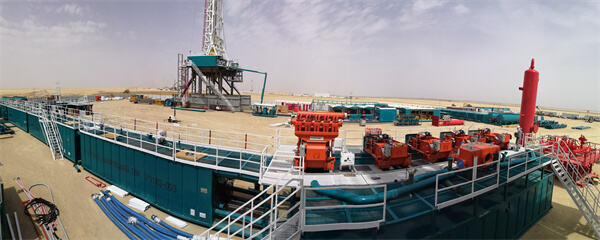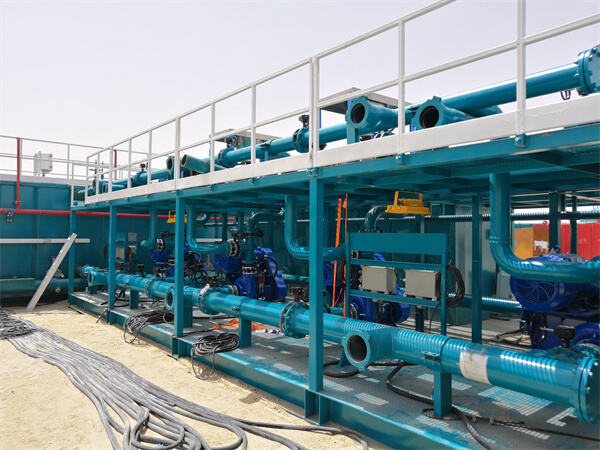Understanding Modern Approaches to Industrial Waste Management
The management of oily sludge treatment has become increasingly critical in today's industrial landscape. As environmental regulations tighten and sustainability becomes a core business priority, industries must adopt effective methods to handle this challenging waste stream. The petroleum industry, refineries, and manufacturing facilities generate significant quantities of oily sludge that require specialized treatment approaches to minimize environmental impact and maximize resource recovery.
This complex waste material, consisting of oil, water, and solids in varying proportions, demands sophisticated treatment solutions. The evolution of treatment technologies has led to more efficient and environmentally conscious methods that not only address waste management concerns but also support circular economy principles through resource recovery and waste minimization.
Physical Separation Technologies
Centrifugation and Mechanical Separation
Centrifugation represents one of the cornerstone technologies in oily sludge treatment. This process utilizes centrifugal force to separate different components based on their specific gravity. Modern centrifuges can achieve separation efficiencies of up to 95%, making them highly effective for initial treatment stages. The technology proves particularly valuable for processing high-volume waste streams where rapid separation is essential.
Advanced mechanical separation systems incorporate multiple stages of treatment, often combining centrifugation with other physical separation methods. These integrated systems can handle varying sludge compositions and achieve superior separation results, particularly when dealing with emulsified oils and fine particulates.
Filtration and Membrane Technology
Filtration systems play a crucial role in oily sludge treatment, particularly for removing solid particles and recovering valuable oil fractions. Modern filtration technologies employ various media types and pore sizes to achieve optimal separation results. Membrane filtration, including ultrafiltration and nanofiltration, has emerged as a highly effective method for treating complex oily sludge compositions.
The implementation of advanced membrane materials and configurations has significantly improved treatment efficiency while reducing operational costs. Cross-flow filtration systems, in particular, have demonstrated excellent performance in maintaining consistent throughput while minimizing membrane fouling.
Thermal Treatment Methods
Thermal Desorption Systems
Thermal desorption has revolutionized oily sludge treatment by providing a highly effective method for separating hydrocarbons from solid materials. This technology operates by heating the sludge under controlled conditions, typically between 200-600°C, to volatilize water and organic compounds while leaving behind clean soil or solid residue.
Modern thermal desorption units incorporate sophisticated temperature control systems and emission management technologies to ensure environmental compliance. The recovered oil can often be recycled back into the production process, while the treated solids may be suitable for beneficial reuse or safe disposal.
Pyrolysis and Advanced Thermal Processing
Pyrolysis represents a more advanced thermal treatment option for oily sludge treatment. This process involves heating the material in an oxygen-deficient environment, converting organic compounds into valuable products such as pyrolysis oil, gas, and char. The technology offers significant advantages in terms of waste volume reduction and resource recovery.
Recent advances in pyrolysis technology have led to more efficient systems with improved energy recovery and reduced environmental impact. These systems can process higher volumes of sludge while generating useful byproducts that offset treatment costs.

Chemical Treatment Solutions
Chemical Demulsification
Chemical demulsification plays a vital role in breaking stable oil-water emulsions commonly found in oily sludge. Modern demulsifiers are specifically formulated to achieve rapid and complete separation while minimizing chemical consumption. The selection of appropriate chemical agents depends on sludge composition, environmental factors, and treatment objectives.
Advanced chemical treatment programs often combine multiple agents to achieve optimal results. These may include surfactants, polymers, and specialized demulsifiers working in synergy to enhance separation efficiency and reduce treatment time.
Oxidation and Advanced Chemical Processes
Chemical oxidation technologies have emerged as powerful tools for treating recalcitrant compounds in oily sludge. Advanced oxidation processes (AOPs) utilize powerful oxidizing agents such as hydrogen peroxide, ozone, or UV light to break down complex organic compounds into simpler, more manageable forms.
The integration of chemical oxidation with other treatment technologies has led to more comprehensive and effective treatment solutions. These hybrid approaches can address a wider range of contaminants while improving overall treatment efficiency.
Biological Treatment Approaches
Bioremediation Systems
Biological treatment of oily sludge has gained significant attention due to its environmental sustainability and cost-effectiveness. Modern bioremediation systems utilize specialized microorganisms capable of degrading hydrocarbon compounds. These systems can be implemented in various configurations, including land farming, biopiles, and engineered bioreactors.
Recent advances in microbial technology have led to the development of more efficient bacterial strains and optimization of treatment conditions. These improvements have resulted in faster degradation rates and more complete contaminant removal.
Enzyme-Based Technologies
Enzyme-based treatments represent an innovative approach to oily sludge treatment. These systems employ specific enzymes capable of breaking down complex hydrocarbons into simpler compounds. The technology offers advantages in terms of specificity and environmental compatibility.
Advanced enzyme formulations, often combined with surfactants and other agents, can achieve impressive results in breaking down resistant compounds. This approach proves particularly valuable for treating sensitive environments where conventional chemical treatments may not be suitable.
Frequently Asked Questions
What makes oily sludge treatment challenging?
Oily sludge treatment presents numerous challenges due to its complex composition, varying physical properties, and potential environmental impacts. The presence of emulsified oils, heavy metals, and diverse organic compounds requires sophisticated treatment approaches combining multiple technologies.
How do companies choose the right treatment technology?
The selection of appropriate oily sludge treatment technology depends on various factors including sludge composition, volume, regulatory requirements, available space, and economic considerations. Most successful treatment programs utilize a combination of technologies tailored to specific waste characteristics and treatment objectives.
What are the latest innovations in oily sludge treatment?
Recent innovations include advanced membrane materials, improved biological treatment systems, and sophisticated thermal processing technologies. Integration of artificial intelligence and automation has also enhanced treatment efficiency and process control. Additionally, new approaches focusing on resource recovery and circular economy principles continue to emerge.

